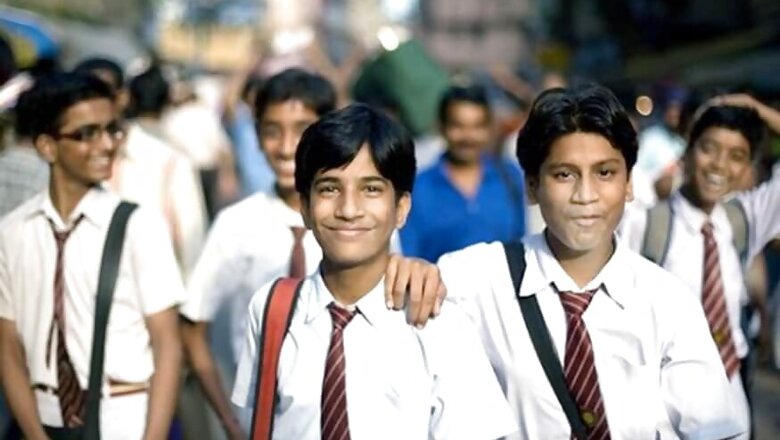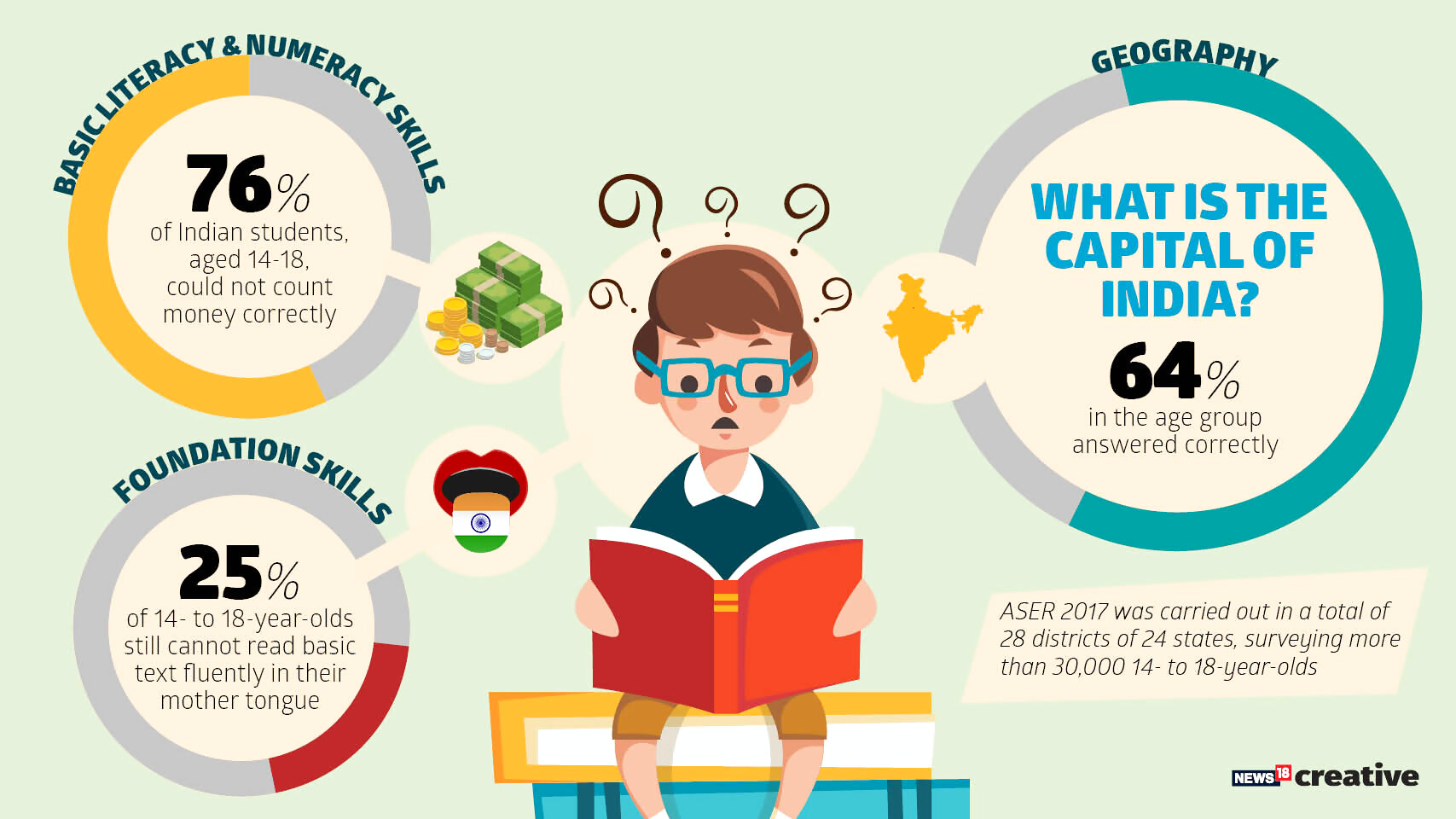
views
New Delhi: A quarter of school students in the country in the age group of 14-18 cannot read fluently in their own mother tongue, 76 percent of them cannot count money correctly, and 36 percent did not know the capital of the country, revealed the Annual Status of Education Report (ASER) 2017.
ASER 2017: 'Beyond Basics', released on Tuesday, in a departure from the past focused on an older age group, youth who are 14 to 18 years old and have moved just beyond the elementary school age.
It explored one key question: "How well are we preparing out youth to build a better future for themselves and for the country?"
ASER 2017 was carried out in a total of 28 districts of 24 states. About 2,000 volunteers from 35 partner institutions, visited more than 25,000 households in 1641 villages, surveying more than 30,000 14 to 18 year olds in all.
Here are the key findings:
Foundational skills
* 25% of this age group still cannot read basic text fluently in their mother tongue
* More than half struggle with division problems. 43% can solve these problems correctly. Division in ASER is practiced as proxy to test basic arithmetic operations
* 53% of all 14 year olds in the sample can read English sentences. For 18-year-old youths, this figure is closer to 60%. Of those who can read English sentences, 79% can explain the meaning of the sentence

* Even among youth in the age group who have completed eight years of schooling, a significant proportion lacks foundational skills like reading and math.
* Although reading ability in regional language and English seems to improve slightly with age, the same does not seem to apply to math.
Applying basic literacy and numeracy skills
*ASER picked up activities like counting money, knowing weights and telling time
*76% of youth could not count money correctly. 90% have arithmetic skills
*56% could add weights correctly in kilograms, 76% have basic math skills
*Telling time is a common daily activity. For the easy task *(hour) 83% got it correct. But for the slightly harder task (hour and minutes) 60% got it right
Basic calculation
*86% of youth could calculate the length of an object if it was placed at the 0 mark on the ruler. But when the object was placed elsewhere on the ruler, only 40% could give the right answer
*How many hours the girl slept? Less than 40% of all sampled youth could calculate, of those who could do division, about 55% could answer
*How many tablets are needed to purify water in the big pot? 50% got it right. For those who could do division, the number is 70%.
*A variety of tasks that we carry out in daily life – both rural and urban - like reading ORS packages. The respondents were asked: How many packages of ORS should be mixed with 2 liters of water? How many times can an adult be given the ORS mixture in 24 hours? Till when can the packet be used?
*In ASER sample more than 75% of youth can read fluently. But only a little over half 53.5% could read the answer at least 3 out of 4 questions based on the written instructions on the ORS package.
*58% can read and follow instructions. And 22% of enrolled can do so.
What are commonplace financial calculations?
*When tested in managing a budget, they were asked: “You have Rs 50 and you are looking at a rate list for snacks. Which three items should you buy so that fifty rupees is completely spent?
Taking purchase decisions
*They were asked: “You need to buy a set of five books. Two different prices are being offered in two different shops. Which shop will you go to if you want to spend the least amount? And how much will you spend? 64% could carry out this financial calculation.
Applying discounts
*38% of youth can do computation correctly – how much to pay after discount?
Calculating repayment
*Next task was to decide which bank to take loan from after comparing interest rates being offered. And then computing the repayment amount a year. 71% youth chose the bank correctly but only 22% could calculate the correct repayment.
Geography
*Map of India was shown to each young person who was surveyed only 86% could answer India
*What is the name of the capital of the country?” 64% answered correctly
*“Which state do you live in?” 79% answered correctly
*Can you point to your state on the map?” 42% could do so
*Not everyone has these foundational skills
*Females perform worse than males on almost all tasks
*The data show that numbers of young people completed 8 years of education of schooling have difficulty applying their literacy and numeracy skills
Awareness and aspirations
*73% of the young people had used a mobile phone within last week.
*Gender difference exists: 12% males never used a mobile while for females the figure was 22%
Usage of Internet and computer
*28% had used the Internet and 26% had used the computers in the last week. 59% had never used a computer. 64% had never used Internet
*Girls have far lower access to computer and Internet as compared to boys: 49% males have never used Internet, close to 76% females have never used done so
*75% have their own bank account; 16% used the ATMs, 5% have done transaction using payment apps or mobile
*60% want to study beyond class 12. This percentage is almost half among the youth who could not read standard 2 textbook fluently
Professional aspirations are gendered
*Males prefer army, police and engineering while girls prefer nursing and teaching careers
*40% had no role models for the profession they aspired for














Comments
0 comment